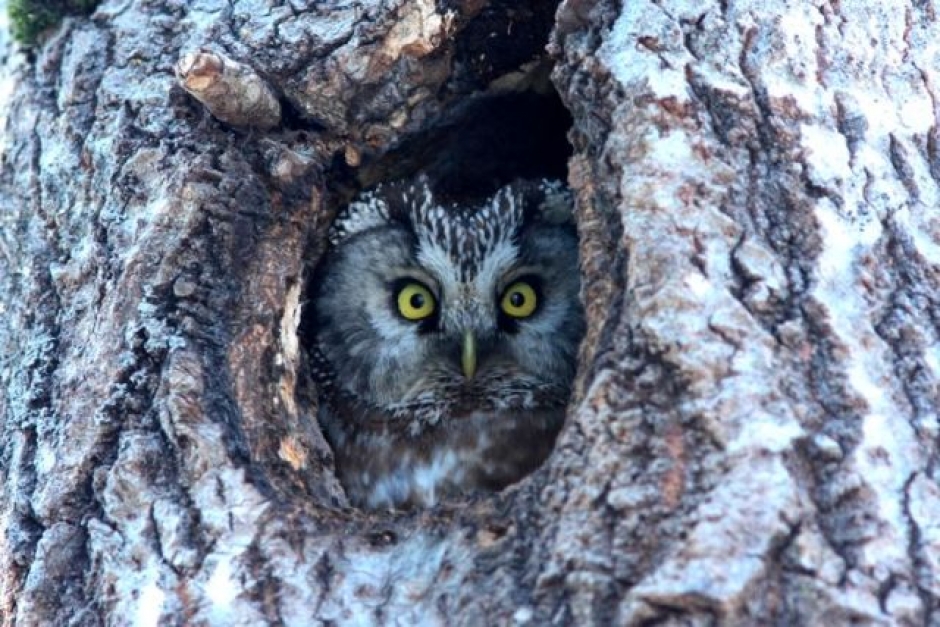Tengmalm's owl
Aegolius funereus

General information. The Tengmalm’s owl is a peculiar little forest dweller that is usually only observed while in its nest. Nesting begins in early February-March and the chicks fledge during May.
During autumn the juvenile owls can travel distances of hundreds of kilometers from their birthplace in order to find new territories. As autumn dusk settles across the land, the owls start moving around their territory and the Tengmalm’s owl’s characteristic clicking call can be heard from wooded areas along the city-fringe. During autumn, wandering owls are also ringed at bird stations by enthusiasts, thanks to which much information about the lives of the owls have been gained.
The living conditions of owls can easily be improved by building and placing suitable nesting boxes along the forest edge. The Tengmalm’s owl has proved to be an effective hunter of moles in forests and farmlands. The Tengmalm’s owl is a protected species under the European Union bird directive as well as a near threatened species according to Finland’s threat classification system.
- Length about 26 cm
- Nests in old black woodpecker cavities or nesting boxes
- Migratory- and sedentary species
- Feeds on moles and nestlings
Habitat. The Tengmalm’s owl thrives in coniferous- and mixed type forest copses near open farmlands. It also inhabits vast, continuous forest areas, as indicated by sightings around the Pilvilampi lake. Studies indicate that nesting has been most successful in old growth forests.
Distribution in Vaasa. The Tengmalm’s owl is found nesting in forests and cultural landscapes. Annual population size varies depending on the availability of prey, mainly rodents. During drops in rodent population, such as 2006, the Tengmalm’s owl was almost completely missing from the avifauna.
Tengmalm’s owl was observed in about 20 survey blocks. Occurrence was mapped annually from February to April during owl listening excursions at nighttime. Observations of these nocturnal creatures are easiest made based on their call. Territories were found predominately in forests along the city-fringe, for example in Utterö, Kronvik and around the Pilvilampi lake. Distribution map is not published due to species protection reasons.
